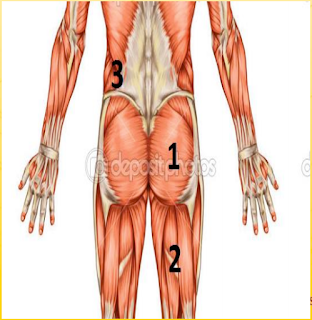By: Andrew Jagim
When I was living in Texas, several people recommended pickle juice to me as a remedy for exercise associated muscle cramps (or EAMC's). Now at first, I just thought this was some crazy Texas witch craft / lore in action, however believe it or not there is some research that supports this nutritional strategy. Once I began hearing about the potential benefits of consuming pickle juice to relieve muscle cramps and see some of the research supporting it's use I slowly changed my mind.
Believe it not, we still do not completely understand the exact physiological mechanism at play regarding muscle cramps, particularly ones associated with exercise. We believe reductions in plasma volume and electrolyte disturbances increases the likelihood of experiencing a muscle cramp as athletes often experience more frequent cramping during hot and humid competition & training which is often indicative of mild dehydration.
However, acute stretching/massaging or activation of muscle receptors often helps to relieve muscle cramping (often immediately) both of which would have no impact on plasma volume and electrolyte changes. The current consensus is that some sort of motor end plate (point of innervation between motor nerves and skeletal muscle) dysfunction occurs as a result of intercellular changes likely resulting from dehydration or electrolyte variations. So, where does pickle juice come in to play? Researchers out of North Dakota State University designed a study to find out:
What did they do?
Researchers conducted two different experimental testing days (1 week apart) during which time subjects were subjected to intentionally induced muscle cramps (via a crazy toe apparatus / torture device). Prior to the muscle cramps, all subjects underwent a mild dehydration protocol (~3% body weight loss). On one occasion the subjects consumed 1 ml/kg of body weight of deionized water or pickle juice; receiving the opposite treatment on the next occasion. Cramp duration and muscle activity were assessed following the drink.
Results
Muscle activity wasn't different during the muscle cramp in each condition, however the muscle cramp was ~50 seconds shorter after ingestion of the pickle juice. 50 SECONDS!?
For those who have experienced a muscle cramp, that 50 second reduction in cramp duration would sure be a welcomed miracle. The authors concluded that pickle juice appeared to inhibit the electrically induced muscle cramps and speculated that the improvement was likely a result of a neural mediated reflux originating in the mouth from the acetic acid in the pickle juice as the improvements could not be explained by rapid restoration of body fluids or electrolytes.
Take Home Message:
Believe it or not it appears as though pickle juice may actually work as a way to diminish muscle cramps. With that being said, a lot of the previously used strategies will also help to prevent them in the first place; strategies such as staying hydrated, adding electrolytes to water, making sure to do a proper warm-up before training etc.















